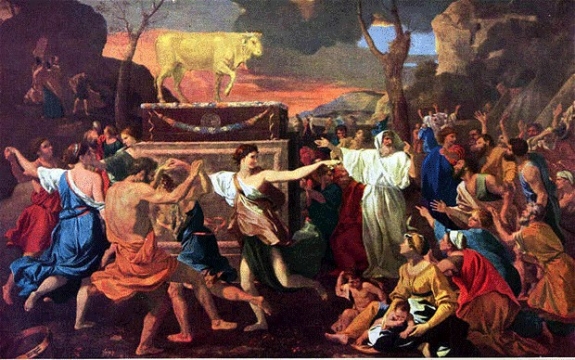The freak act of rage has kick-started another debate on the viability of London’s free gallery entry system.
The event happened shortly before 5pm on Sunday afternoon, one of the gallery’s busiest times. An alarm was raised by a member of staff shortly after, a suspect was arrested, and the two Nicolas Poussin paintings, The Adoration of the Golden Calf and the Adoration of the Shepherds, were removed. (The Guardian have a picture of the damage)
The paintings have already been restored and returned to their hanging positions in the gallery’s permanent collection (room 19).
Was it an accident waiting to happen? The Guardian’s Jonathan Jones calls The Adoration of the Golden Calf “a sitting duck” this morning.
Admittedly, the event exposed a fatal blind spot in National Gallery’s policing. Our galleries, compared to most major international collections, appear relatively relaxed. Getting into Madrid’s Prado collection, for example, is like being admitted to a top security prison.
But the question is, would queuing, bag checking and paying for entry really stop these rare freak acts of violence? What fuels someone to do such a thing in first place?
Historically, most acts of vandalism against great works of art have been committed either by wannabe artists trying to make a statement - as per, in 2007, artist Rindy Sam kissed the canvas of Phaedrus by Cy Twombly, leaving a red lipstick mark, and was subsequently arrested - or by people who have been proved psychotic. The famous serial vandal Hans-Joachim Bohlmann (1937–2009) ended up in an institution, as did the school teacher who famously attacked Rembrandt's Night Watch in the Prado in 1975.



